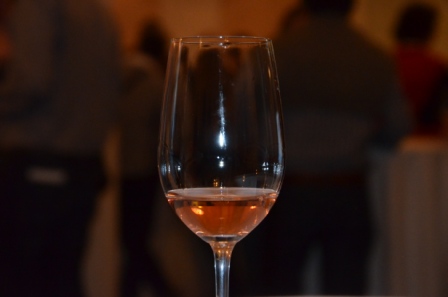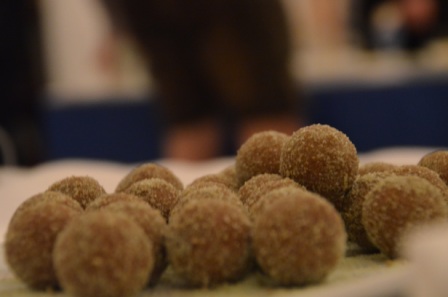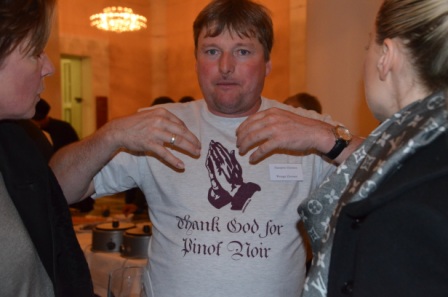Elite, which Elite? Wines and Winemakers at Dallmayr's Spring Wine Tasting
When, every spring, Munich's premier delicatessen store announces an evening of elite wines (and snacks), who am I not to get in line, this time very pleased to be accompanied by Wine Rambler tasting associates Benita and Conny (the latter also photographer for this piece). In last year's report, we walked you through the different wineries' collections in some detail, but I also threatened that I would have a few more general thoughts on the concept of Winzerelite (elite of the winemakers) that Dallmayr has adopted. Why does this make me so deeply uneasy, when it seems so straightforward: The elite is formed by the very best, and who the best are can be established in regular tastings, by journalists, fine wine merchants, and wine guides. Together, they form an elite of sorts, as would athletes, or writers, or scientist or musicians.

The great German social theorist Niklas Luhmann famously proposed that we organize our world in systems, such as love, business, political power and jurisdiction. When they get mixed up, when we try to buy love, or put pressure on a judge, or bribe a politician, our social world is bent out of shape and balance. And here's the problem: Invariably, they get mixed up. So it goes with the idea of an elite.
Is this really about what's in the glasses, or is this about selling an image of exclusiveness, of refinement, to those who think of themselves as a social elite, the high society that, from the look of their fur coats and evening dresses, is increasingly crowding these tastings?

When the recent rise of German wine is discussed, and merchants keep reminding us how high-end Rieslings were once more expensive than any Bordeaux or Burgundy, I wonder if this doesn't also play on a feeling of nostalgia for a time when good money could buy you such rarefied fine stuff (and the working classes knew their place, and could not dream of affording any). Do you want to have this heady mixture of soft-pornographic landscape photography, upper middle class interiors and reminiscences of Victorian /imperial German glory distilled into one slide show? Here you go. There is nothing remotely reproachable about this, it's just that it rubs me the wrong way. But maybe it's me. Here endeth the rant.

And here begin three very short random observations on the tasting: We need to start with the Ziereisen winery, because if Dallmayr wanted an evening of fine wine pretentiousness, they should never ever have invited Hans-Peter and Edeltraud Ziereisen. Depend upon the first couple of German avant-garde Pinot Noir to bring it down to earth with unrestrained chatting (it helps if you can understand the rather extreme dialect of the German south west). The 2009 Pinots they poured were just as expected: Quicksilvery, electric, straight, demanding. The 2007 high-end "Jaspis": Simply a world class Pinot by any standard. There were other great Pinots at the tasting, but my heart belongs to those. They are elite, if there is such a thing.

There is always a danger that you will hang around the Ziereisen table all evening, so we tore ourselves away, and found something else to occupy our minds and titillate our palates: A new grape variety. New to us, that is: Roter Veltliner. Named for the reddish grape skins, this close, but neglected relation of the much more famous Grüner Veltliner. Only some 200 hectares are planted, and those are exclusively in Austria. One of the wineries that have specialised in those rich and spicy whites is Söllner, based in the Wagram Region between the Wachau and Vienna. I confess I had neglected them so far as well. But I liked both their lighter Roter Veltliner "Sonnseit'n" and the surprisingly rich and substantial "Berg Eisenhut". Recommended in cases where you would otherwise go for unoaked Chardonnay or (if you're German and know your stuff) a good dry Silvaner Spätlese.

Finally, I would like to single out for particular praise one of the nicest value-priced German Sparklers I've ever tasted (and value-priced is about the last combination of words I would have readily associated with either Dallmayr or this tasting), Sektmanufaktur Graf's Cuvée blanc Brut: Creamy, fruity, fresh and thoroughly enjoyable. Christof Graf heads the sales department of Reichsrat von Buhl, a large and well-known Pfalz winery in his day job. Elite or not? Who gives a toss?
